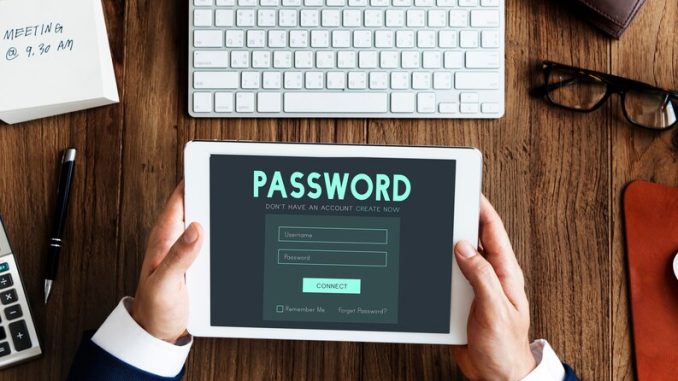
Passwords are under examination in an age of increased cybersecurity concerns and seamless user experiences. This thorough examination explores passwordless authentication systems, a radical change from generating and remembering complicated character combinations. Due to the weaknesses and problems of standard passwords, demand for safe, user-friendly alternatives has increased. This article discusses biometrics, tokens, MFA, WebAuthn, and FIDO2 as new authentication methods. Digital security is changing, providing simplicity and robust protection.
Traditional Passwords And Their Limitations
Classic passwords have long been used for authentication. Users must develop a unique character combination to secure their accounts. However, this strategy has significant drawbacks. Brute force, dictionary, and phishing attacks may compromise passwords. Complex passwords are challenging to create and remember, resulting in poor password hygiene. Leaked password databases are lucrative targets for thieves.
Biometric Authentication
Biometric authentication uses unique physical or behavioural traits to validate a user’s identification. One of the most used biometric technologies is fingerprint recognition, which uses fingerprint patterns. Facial recognition uses facial characteristics for identification, whereas retina and iris scanning examines eye patterns. Voice patterns are used for identification. Biometric authentication improves security and ease. However, privacy problems and the necessity for specialist technology are issues.
Token-based Authentication
Token-based authentication verifies users’ identities using physical or digital tokens. OTPs are a typical token-based authentication method that generates a new code each time. Hardware tokens like critical fobs or intelligent cards provide security. OTP-generating software tokens run on users’ devices. Token-based authentication improves security, but managing and carrying actual passes may be difficult.
Multi-factor Authentication (MFA)
MFA increases security by using multiple authentication factors. MFA improves authentication by requiring two or more elements. A password or PIN, a smartphone or token, or biometrics are MFA approaches. MFA complicates account compromise for attackers. It’s used for online banking, email, and other secure activities. Though MFA increases security, its deployment might be complex for consumers.
Public Key Infrastructure (PKI)
PKI authenticates users via cryptographic certificates. It’s common in business and government. Certificate-based authentication uses public and private keys for encryption and decryption. PKI’s robust security architecture protects communication and data transmission. PKI is used for secure email, digital signatures, and online surfing. PKI deployment requires infrastructure and supervision, yet it provides strong security.
Push Authentication
Push authentication uses mobile apps to securely authenticate users. It usually entails delivering a push message to a user’s phone to confirm or reject authentication. This strategy is used in mobile banking and apps. Push authentication uses a trusted mobile device to boost security. Users may verify their identification by tapping a notice, simplifying the process. A smartphone app is needed, and it’s restricted to smartphone users.
Webauthn And Fido2
Passwordless authentication protocols include WebAuthn and FIDO2. WebAuthn provides biometrics, hardware tokens, and other authentication methods for website and app logins. WebAuthn is enhanced by FIDO2. These standards simplify and secure passwordless authentication, improving user comfort. As more platforms and devices implement WebAuthn and FIDO2, they gain popularity. Integrating APIs and supporting multiple authentication methods is required for WebAuthn and FIDO2 passwordless authentication.
Implementing Passwordless Authentication
Passwordless authentication is crucial to digital security and user ease. This transformation demands a well-planned strategy for organizations and service providers. First, choose the best strategy for your situation. Biometrics, tokens, MFA, and upcoming standards like WebAuthn and FIDO2 offer different benefits. Consider your data’s sensitivity and users’ preferences when determining your needs.
User experience is critical to passwordless authentication. Onboarding should be simple, with clear instructions and user-friendly interfaces. Help people set up passwordless solutions and explain their advantages. No compromise on security. Make sure your technique meets industry standards and regulations. Maintain strict biometric and sensitive data protection.
Passwordless authentication may need infrastructure and software upgrades. Work with specialists for a safe move. Passwordless authentication increases security and makes it simpler for the consumer to access their accounts and data.
Security And Privacy Concerns
Passwordless authentication increases security but raises data privacy and risk issues. Secure biometric data storage and processing are crucial. Security concerns, including man-in-the-middle attacks and unauthorized access, need constant mitigation. User data in passwordless authentication techniques must be handled in accordance with legislative requirements like the GDPR.
Real-world Use Cases
Industries and settings are adopting passwordless authentication. It improves online banking security and usability. Passwordless solutions protect patient data and secure medical records in healthcare. Businesses are using passwordless authentication to ensure data and simplify application access. These real-world examples demonstrate passwordless authentication’s adaptability.
The Future Of Passwordless Authentication
Passwordless authentication promises a safer, easier, and more connected digital world. Technology is constantly evolving, and some tendencies stand out. AI and machine learning should improve passwordless security. AI-powered systems can track user activity, spot abnormalities, and offer context-based authentication. Passwordless authentication across sectors and platforms will change digital security.
It will be part of digital identification solutions, making online services safe and straightforward. WebAuthn and FIDO2 are gaining popularity to ensure compatibility and passwordless adoption. One secure authentication mechanism will allow users to access numerous services and devices. Passwordless authentication will protect online interactions from evolving cybersecurity risks, making them safer and more accessible.
Conclusion
Passwordless authentication solutions may solve password security issues. Biometric authentication, token-based approaches, MFA, PKI, push authentication, and new standards like WebAuthn and FIDO2 improve security and user ease. Passwordless authentication will rise as companies and users realize the necessity of secure access, providing a more robust and user-friendly approach to digital security. Security and user experience must be balanced to make online interactions safer and more accessible.






Leave a Reply